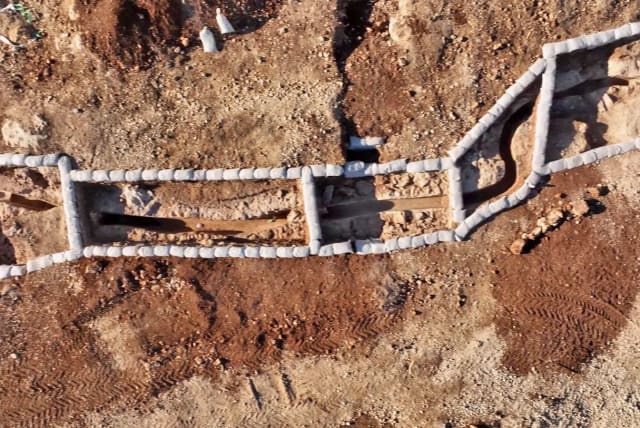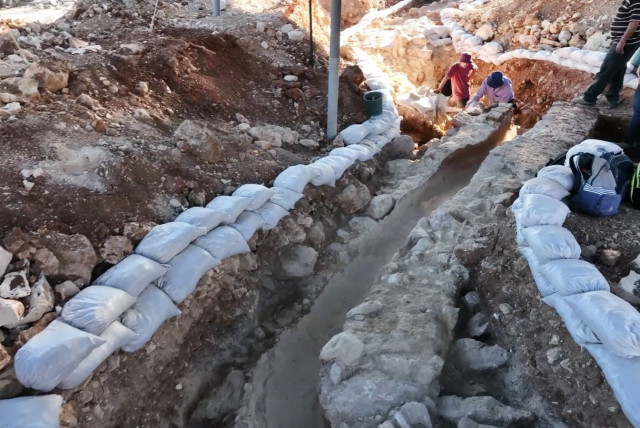Israel uncovers massive section of Second Temple-era aqueduct in Jerusalem

The discovery “may also shed light on the question – who built the first aqueduct – whether it was the Hasmoneans or perhaps King Herod," the researchers noted.
The longest continuous section of Jerusalem’s ancient aqueduct has been uncovered in Givat Hamatos, the Israel Antiquities Authority announced on Monday.
The stretch of the ancient aqueduct, which measures some 300 meters (roughly 1,000 feet) in length, was discovered during archaeological excavations of the area prior to the planned development of the settlement by the Municipality of Jerusalem. The municipality plans on building schools.
One of the companies involved in the Givat Hamatos development, Arim, funded the archaeological efforts.
A number of ancient coins, including a coin minted at the time of the First Jewish–Roman War, were also discovered.
About the aqueduct
Antiquities Authority excavation directors Dr. Ofer Shyam and Ruth Cohen note that the Jerusalem aqueduct was built to meet the ancient city’s growing water demands.
"In the late days of the Second Temple, the city of Jerusalem grew significantly. The Temple had been rebuilt and the water that flowed in conduits and cisterns was no longer sufficient for the thousands of pilgrims and residents,” they explain. “Water needed to be brought to the city from a distance.”
So, in order to meet Jerusalem’s growing need for water, the Hasmoneans, and then King Herod, built two aqueducts to Jerusalem. One of the aqueducts, “the Upper Aqueduct” channeled water to the upper city, what is presently the Jewish and Armenian Quarters of the Old City. The other, “the Lower Aqueduct,” brought water to the Temple.
Shyam and Cohen describe these aqueducts as being “among the largest and most complex water systems in the land of Israel – and indeed, in the ancient world.”
The aqueducts were remarkable feats of engineering, each traversing the roughly ten kilometers from Bethlehem Springs where the water originated to Jerusalem.
Additionally, "in the foundations of the aqueduct from the days of the Tenth Legion, we found about 25 coins scattered at relatively equal distances,” Shyam and Cohen said. “In our opinion, this was not accidental: it is quite similar to the custom today, where coins are placed there for good luck."
Also found in the aqueduct’s infrastructure was a coin from the Second Temple era that was minted around 67-68 CE, during the Great Jewish Revolt, otherwise known as the first of three Jewish-Roman wars.
The press release noted that the researchers theorized that the builders of the ancient Jerusalem aqueduct incorporated it into the structure’s foundations when laying the conduit.
Jerusalem Post Store
`; document.getElementById("linkPremium").innerHTML = cont; var divWithLink = document.getElementById("premium-link"); if (divWithLink !== null && divWithLink !== 'undefined') { divWithLink.style.border = "solid 1px #cb0f3e"; divWithLink.style.textAlign = "center"; divWithLink.style.marginBottom = "15px"; divWithLink.style.marginTop = "15px"; divWithLink.style.width = "100%"; divWithLink.style.backgroundColor = "#122952"; divWithLink.style.color = "#ffffff"; divWithLink.style.lineHeight = "1.5"; } } (function (v, i) { });

